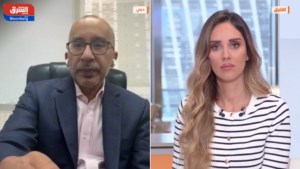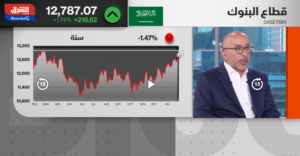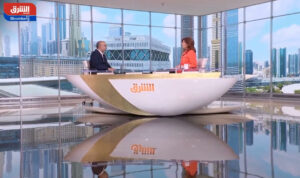In 1851, the Crystal Palace in London was the site of the first world exhibition. More importantly, this was the first time that capitalism, as a world system started to determine all conditions of life.
Ever since, the rise of global capitalism has meant an inclusive approach that incorporates different cultures, religions and countries under the common umbrella of trade. And to break out from a self-enclosed cupola that separates the haves from have nots.
In 1851, the Crystal Palace in London was the site of the first world exhibition. More importantly, this was the first time that capitalism, as a world system started to determine all conditions of life.
Ever since, the rise of global capitalism has meant an inclusive approach that incorporates different cultures, religions and countries under the common umbrella of trade. And to break out from a self-enclosed cupola that separates the haves from have nots.
Liberalisation
And, two, insofar as the definition of capitalism has included western cultural values, it has struggled, given the fact that there continues to be greater resistance — often within western countries — to “universal values” such as western-style democracy and the imperialism that this logically leads to.
It is perhaps this variable more than anything else that has led to the reactionary forces that have unleashed anti-immigration policies such as Brexit and the trade wars unleashed by Trump.
Where does that leave the region and the UAE in particular? As has been abundantly clear, policies that have been announced continue to advocate and foster an environment of openness and inclusion.
The liberalisation of economic sectors and the reformist visa regimes indicate that the country remains committed to openness, benefiting from the forces of universalism first unleashed in 1851 at the Crystal Palace.
Whenever a city and/or a country that is dominated by immigrants begins to emerge, it does so with an underlying level of entrepreneurship, diversity, tolerance, but above all creativity. When you further add property rights into the mix, the structure that emerges is essentially one of democratic capitalism.
That has been the primary distinguishing feature of American capitalism compared to its European peers, and it is this model of capitalism that has been adopted by Dubai since its very inception, with a periodic injection of structural and economic reforms that have buttressed its growth and continues to make it a magnet for attracting human talent.
The problem that emerges in this economic structure is one of creative destruction.
Given the forces of technological change, the process of creative destruction as described by Joseph Schumpeter, only accelerates, as the effects of destruction are felt immediately, whereas the seeds of prosperity take years, if not decades, to bear fruit.
The process of capital formation is always a tenuous one, subject to the galestorms of change and the vagaries of public moods that shift at a moment’s notice, not giving entrepreneurs sufficient notice to regroup.
In this inherently unstable structure, the temptation to yield to populist forces is always strong, whether it is protectionist as is the case with the Trump administration or reactionary, as is the case with competitive devaluations in emerging market countries.
But cities and/or countries that have done so have suffered economic consequences over the medium to long term.
The high order bit therefore becomes a framework where the forces of creative destruction are allowed to take their course in the foreground, whilst in the background, the architecture in place is one where there is increasing flexibility embedded into the system.
Not necessarily as mere shock absorbers, but one where the dynamism that leads to the creative destruction is the same framework that plants the seeds of a revival and sets the stage for continued growth.
How do we measure this experientially? In Dubai, there have been waves upon waves of growth, often led by government related sectors, but one in which the private sector has been left to flourish in sectors that the rest of the region long considered to be closed off to foreign intervention.
This becomes a process of continued reforms, one where the legal, economic, immigration, social and technological frameworks are developed to foster an environment where the population — the key variable for the success of any city — continues to flock in. In the last decade and a half, that magnet has primarily been driven off the back of asset liberalisation.
But even as further immigration reforms, including the ones announced last week, are introduced, we can already see that there is an increasing amount of creativity expressed in areas of artificial intelligence, fintech, proptech and the like, as serial entrepreneurs look to Dubai as their next launch pad.
Perhaps this is because Dubai has embedded into its fabric a culture of openness and opportunity, one where discourse has become increasingly dynamic and iterative. And one where experimentation is cultivated, not frowned upon.
This has not been an easy path to navigate; in point of fact there have been mishaps along the way, as there will be in future as well. The larger point to focus on is that creative destruction always leads to anxiety and stress.
The ultimate test of whether the system is working or not is the ability for people to rise from obscurity to wealth in short periods of time on a continual basis. Outside America, the only place that this has happened on a sustained immigrant city led level has been Dubai.
It is this critical variable that determines both its success as well as its future path as all stakeholders traverse through an increasingly treacherous landscape in the years ahead.
Sameer Lakhani is Managing Director of Global Capital Partners.





